Posted July 2, 2025 by Tiffany Lee
In case you missed these stories highlighting research and creative activity at the University of Nebraska-Lincoln, the Office of Research and Innovation’s communications team has compiled a roundup of some top research stories from research.unl.edu and other sources.
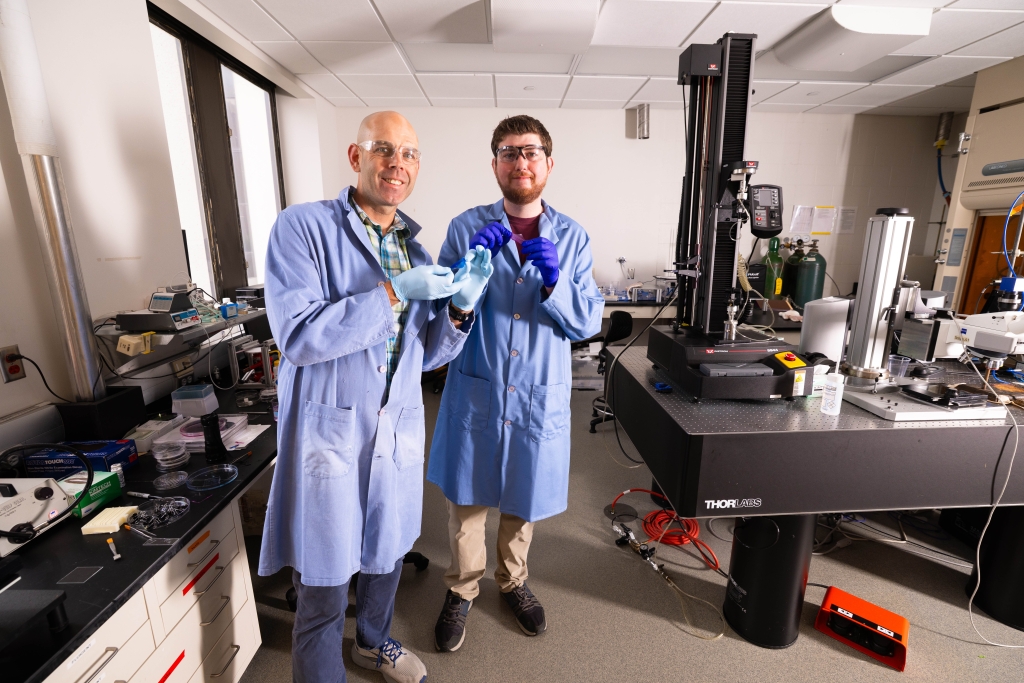
Husker researchers developing cephalopod-inspired synthetic skins
Who: Stephen Morin, associate professor of chemistry; Brennan Watts, doctoral student in chemistry; other graduate students in chemistry
What: Morin’s laboratory recently published a paper in Advanced Materials focused on the development of synthetic skins that approximate the mechanical action of the chromatophores found in cephalopods – squids, octopi, cuttlefish and other species. Chromatophores are micrometer- to millimeter-scale organs containing pigment sacs that become more visible as small radial muscles pull on the sac, making the pigment expand under the skin. Multiple layers of synthetic chromatophores could be programmed to respond to specific environmental stimuli, making them well-suited for applications in soft robotics and human-machine interfaces. Some of these materials have potential to replace existing display technologies that are electrically powered and require rigid, inflexible components such as computer screens.
“We are working in an emergent area sometimes called autonomous materials,” Morin said. “Autonomous materials have the ability to interact, sense and react with their environment in the absence of user input.”
Writer: Dan Moser, Office of Research and Innovation
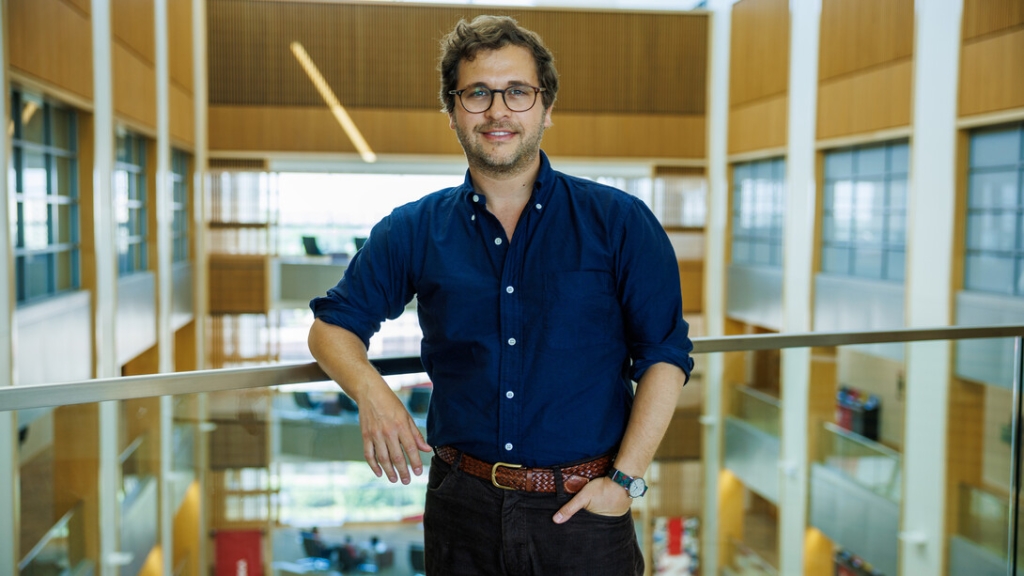
Husker economist studies effects of evictions on children
Who: Daniel Tannenbaum, Georgia and Jim Thompson Associate Professor of economics
What: Tannenbaum received a $430,587 grant from the National Science Foundation’s Faculty Early Career Development Program to explore how evictions affect children over the long term. This is a gap in this area because children are not named in housing records, leading to a dearth of administrative data linking them to short- and long-term outcomes. Tannenbaum will create newly linked datasets to determine, for example, how eviction affects school performance and later household structures, earnings, employment and incarceration rates during adulthood. Eventually, Tannenbaum’s findings could inform new policies aimed at tackling housing instability in the U.S. The project also integrates education initiatives that expand career pathways in social science and develop new curricula.
“Eviction court records do not contain information beyond the court case,” Tannenbaum said. “Understanding the impact of eviction on households requires building new datasets that follow individuals after the court process is over.”
Writer: Dan Moser, Office of Research and Innovation
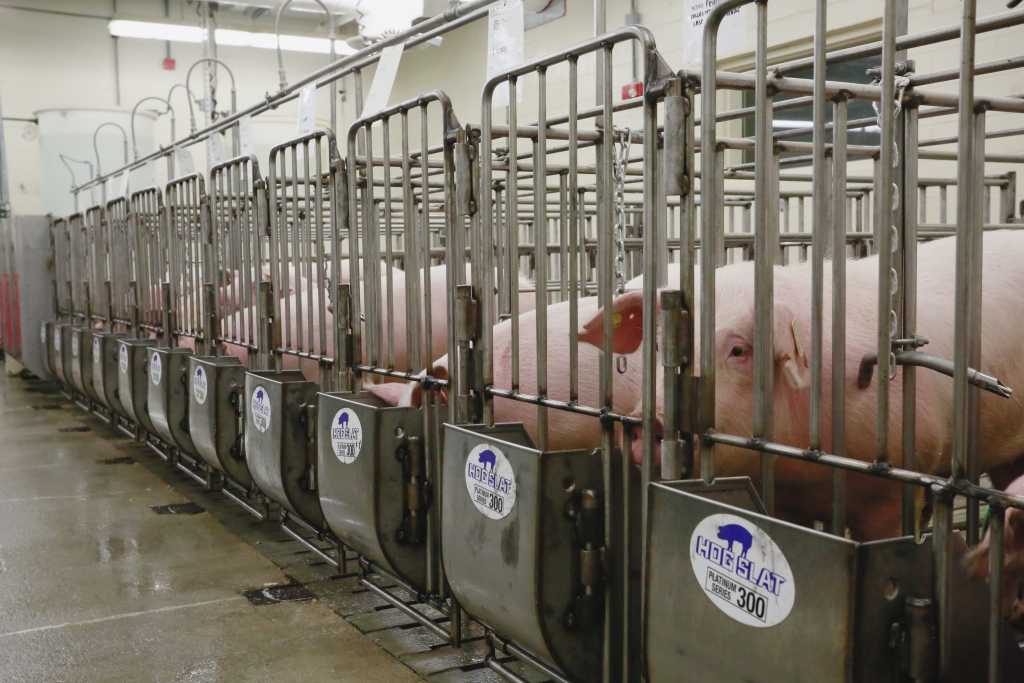
Facility changes build on Husker swine research momentum
Who: Amy Desaulniers, associate professor in the School of Veterinary Medicine and Biomedical Sciences; other Husker researchers studying swine
What: New gate feeders, funded by the Nebraska Pork Producers Association, were installed in the “pig room” of UNL’s Animal Science Complex to boost the university’s swine research, which is critical to the state’s industry and efforts to feed a growing global population. The additional space is key for research efforts aimed at meeting the increasing demand for pork, which is expected to increase 37% by 2050. The upgrade will enhance research across multiple domains, such as developing boars that are more genetically tolerant of gestational heat stress; improving pigs’ gut health without the use of antimicrobials; designing better vaccines to protect against influenza in pigs; and developing precision livestock tracking technology for continuous monitoring.
“Interest and momentum in swine research are growing at UNL, and that is in part due to their importance for agriculture in the state, and nationally and internationally, but also they’re fantastic biomedical models,” Desaulniers said.
Writer: Dan Moser, Office of Research and Innovation
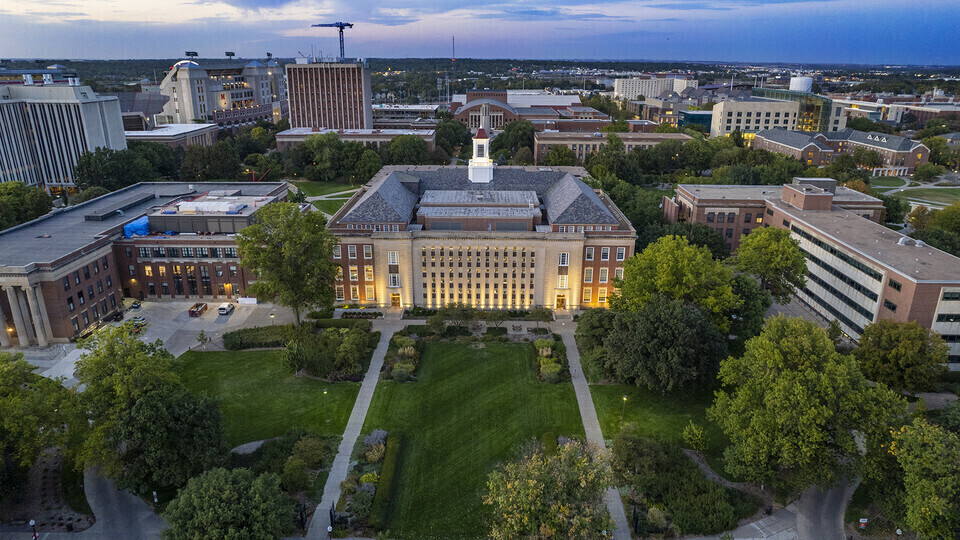
Nebraska U remains among the world’s best for earning patents
Who: Researchers at the University of Nebraska-Lincoln, University of Nebraska Medical Center and the University of Nebraska at Omaha
What: In the latest ranking from the National Academy of Inventors, the University of Nebraska system climbed six spots to No. 49 nationally and remained among the top 100 globally after securing 47 U.S. utility patents in 2024. This marks the eighth consecutive year that the combined research efforts of UNL, UNMC and UNO have earned the global distinction. Utility patents, granted by the U.S. Patent and Trademark Office, are awarded to the university’s technology transfer offices – NUtech Ventures at UNL, and UNeMed Corp. at UNMC and UNO. Seven of NU’s 47 utility patents were awarded to Virtual Incision, the faculty-led startup that developed the MIRA surgical robot. The company was founded by UNL engineer Shane Farritor and Dimitry Oleynikov, a former UNMC faculty member.
“This ranking demonstrates that our faculty and research teams are among the best in the world at turning big ideas into solutions that address some of the most complex global challenges,” said Rodney D. Bennett, UNL chancellor. “Every patent tells a story of innovation, and it is inspiring to see our research making a difference in Nebraska and beyond.”
Writer: Troy Fedderson, University Communication and Marketing

Research examining parents’ well-being, communication in families with autistic children
Who: HyeonJin Yoon, research assistant professor in the Nebraska Center for Research on Children, Youth, Families and Schools
What: With funding from the University of Nebraska Medical Center’s Great Plains IDeA CTR, Yoon is leading UNL’s role in a study exploring how parents’ mental health affects their communication with their autistic children. With collaborators from UNL, UNMC and the University of Nebraska at Kearney, Yoon is recruiting both families with autistic children and families with typically developing children between the ages of 6 and 10. The researchers will use surveys focused on parents’ mental health and observations of parent-child play sessions to determine the links between parental psychological well-being and parent-child interactions.
“I’m looking forward to uncovering those relationships, which will hopefully lead to more personalized support or intervention for both autistic children and their caregivers,” Yoon said.
Writer: Chuck Green, Nebraska Center for Research on Children, Youth, Families and Schools
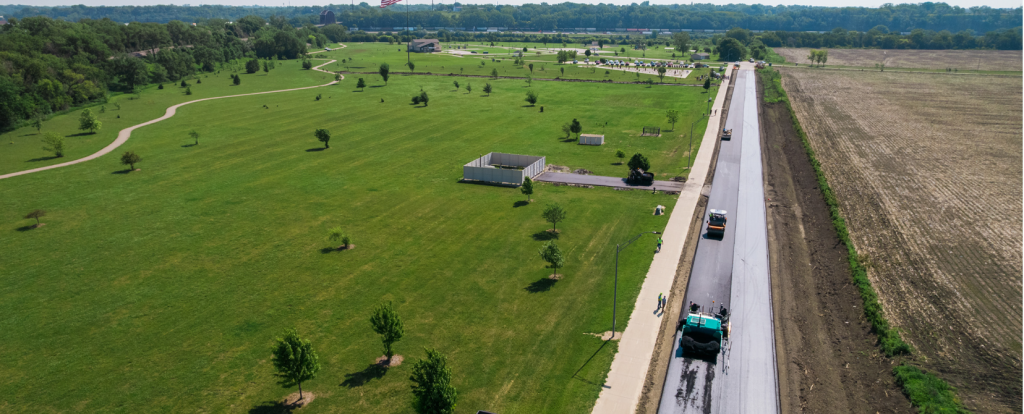
Nebraska Engineering paves way for plastic road in South Sioux City
Who: Jamilla Teixeira, assistant professor of civil and environmental engineering
What: Teixeira’s expertise helped South Sioux City, Nebraska, construct a 4,000-foot stretch of Foundry Road, as well as an extension of the Al Bengtson Trail, using a cutting-edge asphalt blend made from two million recycled plastic bags. The road is a first-of-its-kind in Nebraska and aims to reduce plastic waste while improving road durability, especially under varied weather conditions. South Sioux City received a $500,000 grant from the Nebraska Environmental Trust for the project and contacted Teixeira – an expert in sustainable infrastructure solutions – to partner in the work. The Nebraska project, which was celebrated at an event at Siouxland Freedom Park on June 11, follows similar initiatives in Colorado and Wisconsin to invest in asphalt made from shredded plastic.
“This is a pilot project, but it is an excellent opportunity to partner with a Nebraska community and test how the mixture will perform under the extreme weather conditions we have here,” Teixeira said.
Writer: College of Engineering
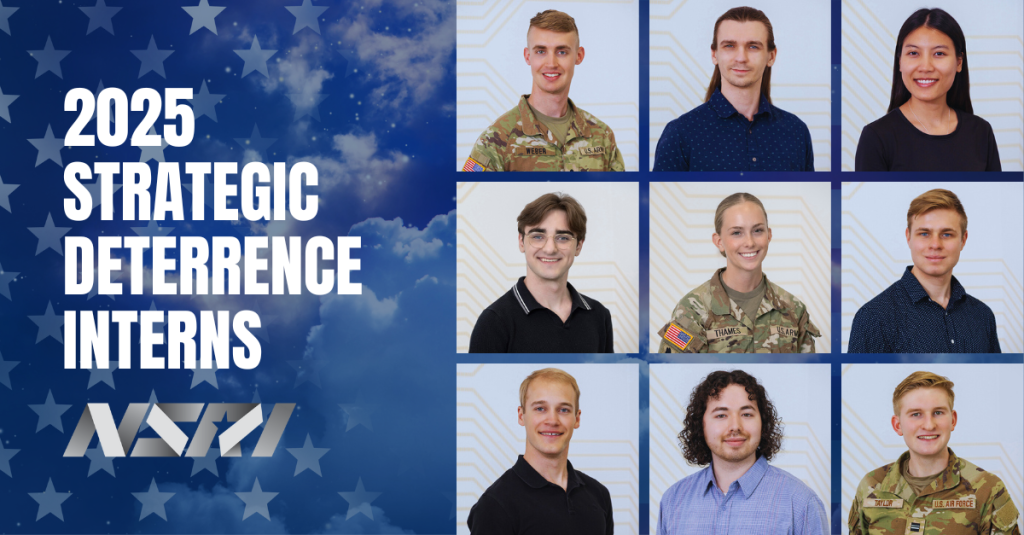
NSRI strategic deterrence interns supporting electromagnetic spectrum research deliverables
Who: National Strategic Research Institute Strategic Deterrence Interns; Andrew Harms, assistant professor of electrical and computer engineering; M. Can Vuran, Dale M. Jensen Professor of computing
What: The 10 interns, who are students and recent graduates of the University of Nebraska system as well as ROTC cadets from throughout the country, will contribute to two projects in support of the U.S. Strategic Command’s mission for joint electromagnetic spectrum operations. The annual internship program bridges academia and defense to create career-developing experiences for students and deliverables for the Command. One of the projects, led by Harms, will provide a foundational prototype to explore feasibility of basic frequency capture and retransmission functionalities. The second, led by Vuran, will develop a system for accurately geo-locating emitters in a congested environment using Software Defined Radio receivers.
“Having a father in the U.S. Marines, the goals of national security hit close to home for me,” said Robert Garcia, a 2025 intern and graduate student in telecommunications engineering at UNL. “Electromagnetic warfare is going to become one of the most vital forms of conflict as radio and cellular communications continue to become more commonplace and necessary for advanced warfare. The potential for interference, deception, jamming and electromagnetic pulse attacks against communication systems becomes higher and higher if the proper steps aren’t taken to prevent and strengthen these systems against adversaries.”
Writer: Katelyn Ideus, National Strategic Research Institute
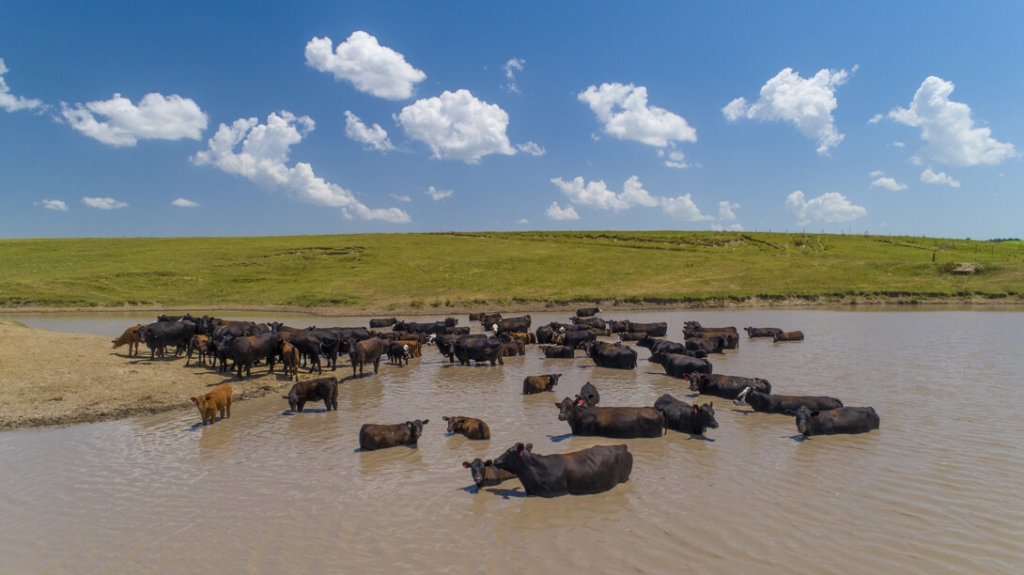
Bureau of Sociological Research helping steer ag policy research
Who: University of Nebraska-Lincoln’s Bureau of Sociological Research; Simanti Banerjee, professor of agricultural economics
What: UNL’s BOSR has extensive experience gathering perspectives from producers, a process that helps inform agricultural research, practices, and state and federal policymaking. Research conducted in partnership with BOSR over the last year explored women in agriculture, grazing, soil health, precision agriculture practices, social networks and grain marketing. Many Husker researchers, including Banerjee, have relied on BOSR expertise for major research projects. Banerjee has partnered with BOSR on three major research projects, including a recently completed survey that sought information from ranchers in Montana, South Dakota and North Dakota about new policies regarding grassland conservation in the Conservation Reserve Program. She said the bureau’s expertise is particularly valuable in gaining suitable data from agricultural producers, which can be more challenging than surveying the general public.
“They bring their own survey methodological expertise to the table, and they will guide us,” she said. “Their openness to impart that knowledge to us also builds my own capacity and helps me deploy projects in a timely fashion.”
Writer: Deann Gayman, University Communication and Marketing





